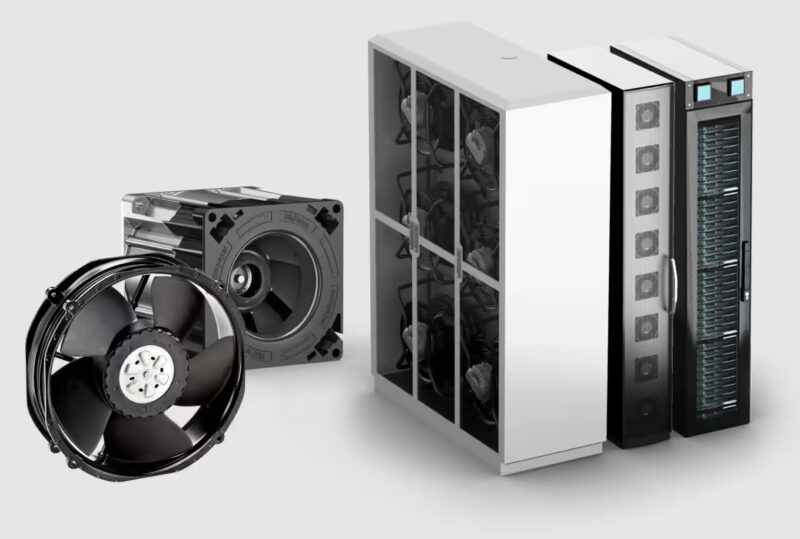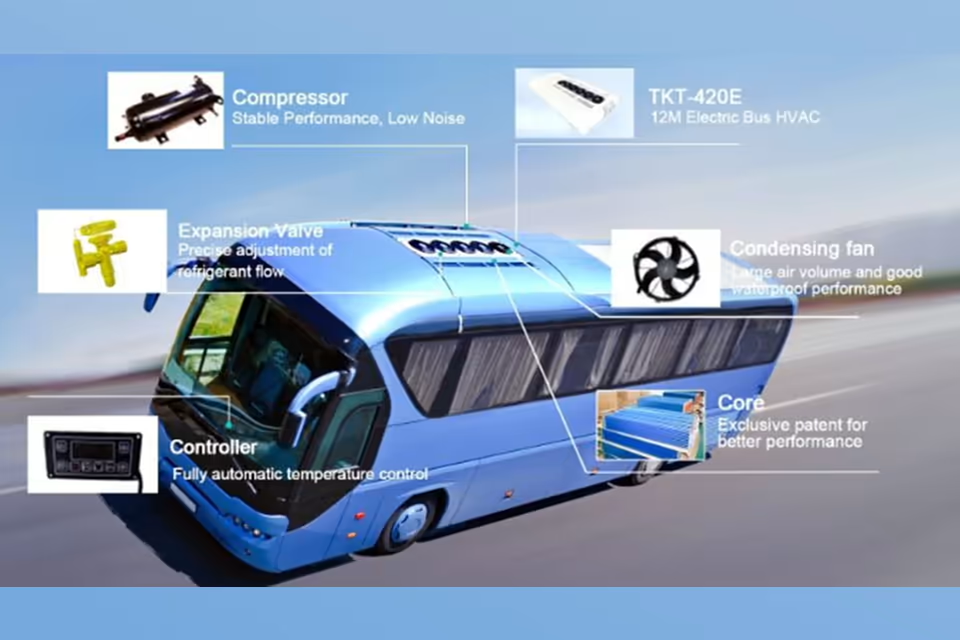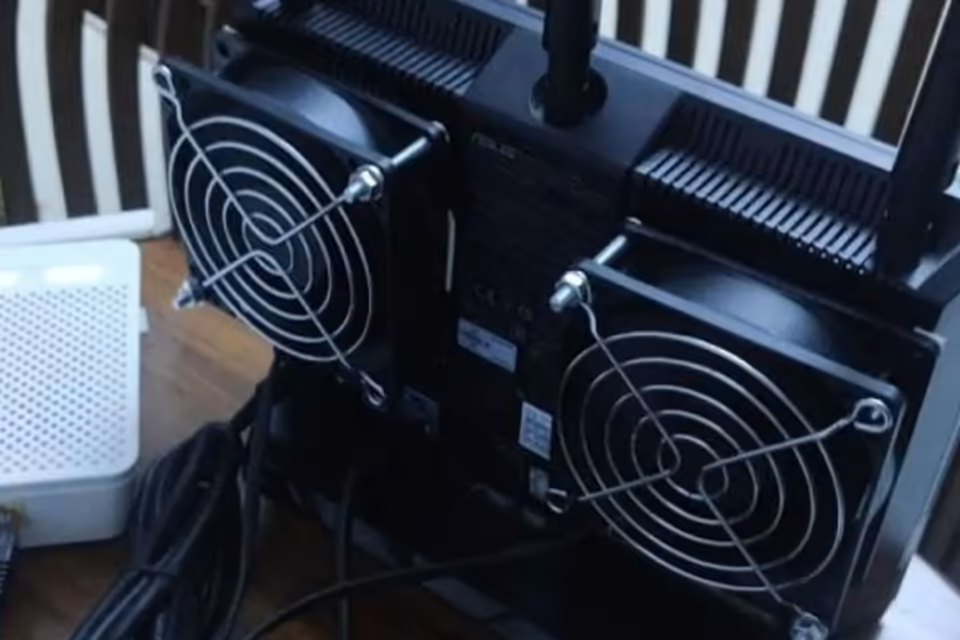Cooling fans are indispensable components in data centers, serving as the frontline defense in thermal management to ensure the reliability and optimal performance of critical IT infrastructure.
As the processing power of data centers escalates, so does the generation of significant heat. This makes effective cooling mechanisms paramount to preventing equipment failure, optimizing operational efficiency, and managing energy costs.
Cooling fans are fundamental to this process, facilitating the necessary airflow to dissipate heat and supporting a variety of cooling strategies, from traditional air-based systems to advanced liquid cooling solutions.
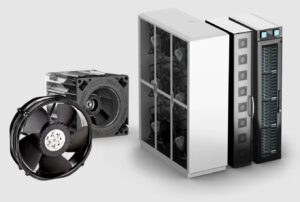
Evolving Cooling Mechanisms and Systems
Cooling fans are integral to both traditional and innovative cooling architectures, ensuring that critical IT equipment operates within safe thermal limits.
Air-Based Cooling
This remains a prevalent strategy, especially for facilities with rack densities up to 50kW. At its most basic level, this involves rack-level cooling, where fans located within server racks dissipate heat directly from high-performance components like CPUs and GPUs.
More sophisticated strategies involve hot aisle/cold aisle containment, which uses physical barriers to prevent hot exhaust air from mixing with cold intake air, dramatically improving cooling efficiency.
Another method, evaporative cooling, uses fans to draw in outside air and cool it through water evaporation, significantly reducing energy consumption in suitable climates.
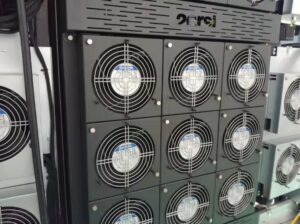
Optimizing Energy Efficiency in Cooling
With cooling accounting for a substantial portion of a data center’s energy budget, optimizing fan performance is a primary focus for reducing operational costs.
Fan Speed Control
One of the most effective strategies is controlling fan speed based on the real-time cooling demand. Implementing Variable Frequency Drives (VFDs) allows fans to slow down when the thermal load is low, which can result in energy savings of up to 66%. This dynamic adjustment is crucial in modern facilities where workloads and subsequent heat generation can fluctuate significantly
Electronically Commutated (EC) Fan
EC fans represent a major advancement in efficiency. Their design includes an intelligent, integrated motor that offers superior controllability.
The power draw of an EC fan is related to the cube of its speed, meaning that even a small reduction in speed leads to a substantial decrease in energy consumption without compromising performance. Upgrading to EC fans is a key strategy for enhancing a data center’s Power Usage Effectiveness (PUE).
Key Challenges and Modern Solutions
Data centers face persistent challenges related to cooling efficiency, system integration, and environmental contamination.
Challenges
The primary challenge is managing ever-increasing energy consumption. Integrating new, complex cooling systems into existing infrastructure can also be difficult. Furthermore, contamination risks from mixing outside and inside air, and fouling from microbial growth or corrosion, can impair cooling performance and efficiency.
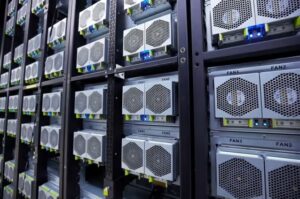
Solutions
The industry is responding with innovative solutions. Adopting advanced technologies like liquid and evaporative cooling is a key trend. Implementing structured maintenance programs that include regular cleaning and inspections is essential for mitigating fouling and ensuring system longevity.
Finally, advanced monitoring systems that incorporate AI and machine learning can optimize cooling operations in real-time, predict potential failures, and lead to significant energy savings.
The Future of Data Center Cooling
Looking ahead, the landscape of data center cooling is set for continued innovation. Emerging technologies like geothermal cooling, advanced evaporative techniques, and AI-driven management systems are poised to further enhance efficiency and sustainability.
As data center operators strive to boost performance while minimizing their environmental footprint, the strategic deployment and intelligent management of cooling technologies—with fans remaining a core component—will be more critical than ever in shaping the future of digital infrastructure.

